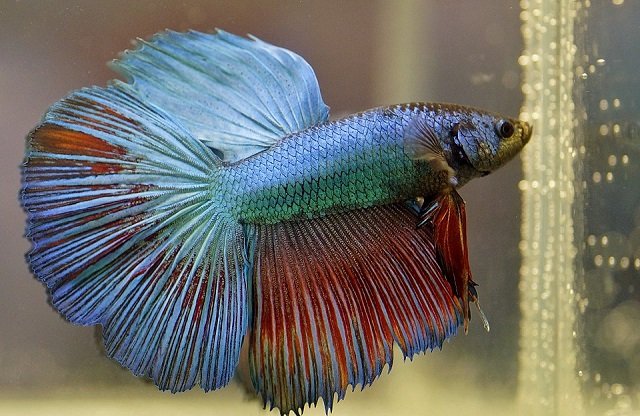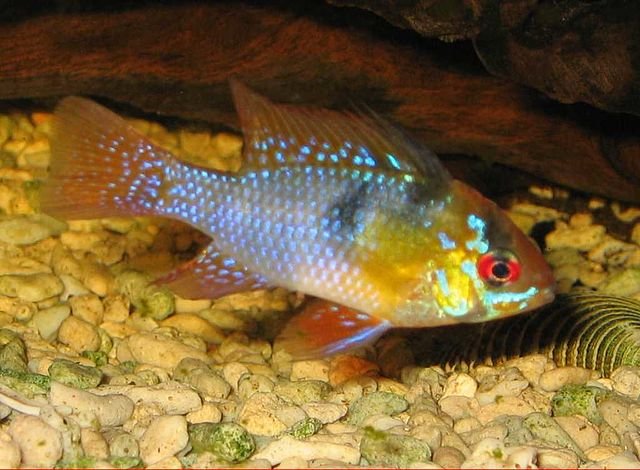
The Siamese fighting fish (Betta splendens), more commonly known as the Betta fish, is one of the most popular ornamental fish, admired for its vibrant colors and elegant fins. However, these fish are often kept in inadequate conditions, such as small and barren tanks, which can negatively affect their well-being. Fortunately, with some knowledge and care, you can create a much happier and healthier home for your Betta.
Scientists have found that the beloved Betta fish are often housed in conditions that are only a quarter of the size they need to thrive, raising questions about decades of retail practices in the multi-billion-dollar ornamental fish industry worldwide.
A new study published by researchers from Macquarie University and the Virginia Institute of Marine Science shows that the typical housing conditions of Siamese fighting fish, one of the world’s most popular pets, can cause them significant harm.
Why is fish welfare important?
Although often overlooked, fish are intelligent and sensitive animals. Studies have shown that they possess memory, cognitive abilities, social intelligence, individual personalities, and the capacity to feel pain. Therefore, it is crucial to ensure that fish in captivity have living conditions that meet their physical and psychological needs to guarantee their well-being.
The article, published in the Journal of Animal Welfare, challenges long-standing practices in the ornamental fish trade, showing how fish change their behavior when kept in the small jars and containers they are commonly sold and housed in.
“Siamese fighting fish are often treated as decorations rather than animals,” says Dr. Naomi Clark-Shen, a marine biologist at James Cook University who led the study in Singapore.
“Our study suggests that they need to be treated much better, especially in terms of how they are housed.”
Stay Always Informed
Join our communities to instantly receive the most important news, reports, and analysis from the aquaculture industry.
Larger, well-equipped tanks improve well-being
Researchers studied how tank size and the presence of elements (plants and shelters) affect the behavior of Siamese fighting fish. They rotated the fish between five different housing conditions:
- Small tank (1.5 L)
- Small (3.3 L)
- Medium (5.6 L)
- Large (19.3 L)
- Large without elements (19.3 L)
The results showed that tank size and the presence of elements have a significant impact on fish behavior. According to the study, fish in larger tanks were significantly more active, swimming an average of 92 seconds more during observation periods compared to those kept in jars.
They also exhibited more natural behaviors such as foraging and exploration.
Key findings
- Activity: Fish were significantly more active in the large tank compared to smaller tanks.
- Abnormal behaviors: In small tanks, fish spent more time resting and displayed abnormal behaviors such as “hovering” and stereotypical swimming patterns. Fish in the large tank without elements also exhibited more abnormal behaviors.
- Swimming: Fish swam 92 seconds longer in the large tank than in the small tank.
- Resting: In the large tank, fish rested 109 seconds less than in the small tank.
- Foraging: Fish foraged 11 times more in the large tank than in the small tank.
“Research on various fish species shows that, like other animals in captivity, fish need spacious and natural environments to thrive, and small, empty aquariums cause stressful behavior and lower well-being,” says Professor Culum Brown of Macquarie University.
“It was clear that Siamese fighting fish do better in larger, well-equipped aquariums,” says Dr. Clark-Shen.
Complexity matters
Aquarium complexity proved to be just as important as size. When provided with tanks equipped with gravel, plants, and hiding spots, the fish spent nearly half of their resting time using these features instead of hovering in open water.
Fish kept in small or barren environments exhibited concerning behaviors, including repetitive swimming patterns, prolonged floating, and increased interaction with aquarium walls.
Based on the research findings, the team recommends a minimum tank size of 5.6 liters for displaying and selling Siamese fighting fish, with even larger tanks for keeping them as pets.
All tanks should contain gravel, live plants, and shelters, with designs that prioritize width over height to better reflect their natural habitat.
Recommendations for siamese fighting fish care
Based on this study, here are some recommendations to improve the well-being of your Siamese fighting fish:
Tank Size:
- For display and sale: A minimum tank size of 5.6 L is recommended.
- For home care: Larger tanks of at least 5.6 L are advised.
Elements:
- All tanks should contain gravel, live plants, and shelters.
- Siamese fighting fish spend a significant amount of time resting on or near these elements.
Environmental Enrichment:
- A complex and enriched environment promotes natural behaviors and reduces abnormal behaviors.
Tank Depth:
- Since Siamese fighting fish live in shallow waters in the wild, tanks that are wider/longer rather than deep are likely more suitable.
Conclusion
“While we hope policymakers will improve regulations regarding the sale and display of these animals, we also hope that aquariums, pet stores, and fish owners recognize that these animals are sentient beings and respond to the urgent need to improve their lives,” says Professor Brown.
By providing your Betta fish with a spacious and enriched home, you can significantly enhance its quality of life. Remember, these animals are more than just decorations—they deserve the same care and consideration as any other pet.
Contact
Culum Brown
School of Natural Sciences, Macquarie University
Phone: +61 2 9850 6292
Email: culum.brown@mq.edu.au
Reference (open access)
Clark-Shen N, Tariel-Adam J, Gajanur A, Brown C. Life beyond a jar: Effects of tank size and furnishings on the behaviour and welfare of Siamese fighting fish (Betta splendens). Animal Welfare. 2024;33:e62. doi:10.1017/awf.2024.67
Editor at the digital magazine AquaHoy. He holds a degree in Aquaculture Biology from the National University of Santa (UNS) and a Master’s degree in Science and Innovation Management from the Polytechnic University of Valencia, with postgraduate diplomas in Business Innovation and Innovation Management. He possesses extensive experience in the aquaculture and fisheries sector, having led the Fisheries Innovation Unit of the National Program for Innovation in Fisheries and Aquaculture (PNIPA). He has served as a senior consultant in technology watch, an innovation project formulator and advisor, and a lecturer at UNS. He is a member of the Peruvian College of Biologists and was recognized by the World Aquaculture Society (WAS) in 2016 for his contribution to aquaculture.




